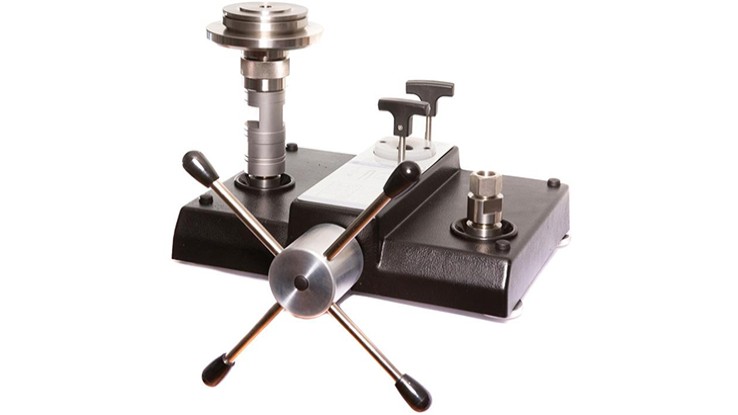What are Deadweight Testers?
Deadweight Testers are considered "primary" standards for pressure. "Primary" can have two semantic connotations: one meaning that a deadweight tester generates pressure using the primary physical quantities mass and length; the other denotes that a deadweight tester is at the top of the hierarchy of metrological devices used to generate and calibrate pressure. Either way you define it, deadweight testers have been the primary source for pressure measurement in calibration labs for many years. Because of their longevity and status in the market as the go-to instrument for use as a primary pressure reference standard, as well as their use as pressure calibrators in field applications, deadweight testers have become available in various forms and have adopted different names in different countries and languages. Among these are pressure balance and piston gauge. The name pressure balance is indicative of the way that the instrument uses the balanced equilibrium between the weights and the fluid being pressurized under the piston. The name piston gauge refers to the precise piston and cylindar system that is intregral in the measurement.
Whatever the local name used for these, primary pressure reference standards, deadweight testers, pressure balances and piston gauges all use weights (mass) stacked on top of a piston / cylinder mechanism that is in equilibrium with a fluid (pneumatic or hydraulic) which exerts a force on the cross sectional area of the piston. A simple equation describes this equilibrium and is the basic definition of pressure: P = F/A, where P = Pressure, F = Force and A = Area. In deadweight testers, "P" is the pressure of the fluid under the piston, "F" is the force created by the stacked masses within a gravitational field, and "A" is the cross sectional area of the piston. Together, these primary physical quantities are used to generate a highly accurate pressure which can be ported into a device being tested or calibrated. The "How does a deadweight tester work?" video describes this in some detail.
WIKA Dead Weight Testers on the Mensor Site
WIKA and DH Budenberg Deadweight Testers
WIKA and DH Budenberg branded deadweight testers offer a complete scope of hydraulic and pneumatic deadweight testers used in a variety of applications. The DH Budenberg industrial deadweight testers and WIKA laboratory deadweight testers can be seen under the "Primary Standards & Deadweight Testers" section of this website. In these pages we offer deadweight testers for field applications, test benches and the laboratory. The CPB5800, CPB5000 and CPB3800 can all be supplied with a dual piston assembly, which increases the range of the deadweight tester by utilizing two piston cylinders in a single mechanism. A high pressure piston rotates inside a low pressure piston that rotates in the main cylinder. As the pressure increases it acts on the effective area of the low pressure piston and the high pressure piston; at a specific pressure the low pressure piston becomes the cylinder in which the high pressure piston rotates. This allows the pressure to act on two different effective areas, depending on the pressure exerted on the pistons.
What is a Digital Deadweight Tester?
A special type of deadweight tester that is capable of measuring pressure very precisely utilizes a piston cylinder system in a different way. The CPD8500 Digital Deadweight Tester measures the pressure exerted on the top of a piston rotating in a cylinder, using a very accurate scale below the piston. The same principle of P=F/A applies, except in this case, the force is being measured instead of being applied by weights.
Maximum Ranges for Deadweight Tester Calibration
- Pneumatic pressure with deadweight tester calibration is possible for ranges up to 5000 psi.
- Hydraulic pressure calibration is possible to ranges up to 116,000 psi.
- Digital Deadweight Tester ranges:
- Absolute: 1...20 bar abs (15...290 psia)
- Gauge: 1...500 bar gauge (15...7250 psig)
What Are the Common Applications of Deadweight Testers?
Deadweight testers are used in multiple industries to make sure pressure measuring devices can calibrate to the most precise accuracy as possible. This process makes sure the best results are found in pressure gauge calibration, pressure relief valve testing, hydraulic pressure system testing as well as research and development.
What Are the Factors When Considering a Deadweight Tester?
When you look for a deadwight tester, you should consider the area of use, choice of media, the operating range, accuracy and the starting pressure.
What Pressures Are Associated with Deadweight Tester Calibration?
Deadweight tester calibration is suitable for low, mid and high pressures ranges. Deadweight testers generally can reach up to 10,000 psi, but the maximum limit depends on the model itself.






